Ginkgo biloba
Searching for a unambiguously awful planting for your landscape ? face no further than the maidenhair tree tree : a plant as ancient , gallant , and fascinating as the dinosaurs .
A live dodo from the twenty-four hour period of prehistoric culture , Ginkgobilobahas been around the closure a couplet of times , and has done so in style .
Gorgeous colors , beautiful fan - shaped leaves , and an appealing form all combine to make this tree well worth your growing endeavour .

Photo by Mark Bolin, Wikimedia Commons, viaCC BY-SA.
We relate to trafficker to help you find relevant products . If you buy from one of our contact , we may earn a commission .
Not that you ’ll have to put in that much study – this tree is extremely light to crop !
Along with its aesthetic time value , a maidenhair tree is tough and adaptable , making it a solid selection for poor planting sites or laissez - faire gardeners .

That being say , I recollect these trees are too pretty for apathetic care .
In this usher , we ’ll cover exactly whatG.bilobarequires for optimum health and aesthetics . By the closing , you ’ll be quick to grow Ginkgo biloba like a pro !
Here are the specifics of what we ’ll be discussing :

What You’ll Learn
What Are Ginkgo Trees?
Also known as the maidenhair tree , Ginkgobilobais the only surviving member of theGinkgogenus , the Ginkoaceae fellowship , the Ginkgoales parliamentary law , the Ginkgoopsida class , andthe Ginkgophyta division .
Talk about being one of a sort !
Native to China and hardy in USDA Zones 3 to 9 , ginkgos are technically gymnosperm , albeit strange unity .

They’redioecious , withseparate male and female flora . In spring , male ament bring out pollen , which the wind channel to the female , olive - alike ovule .
The ovules secrete a liquidness to help catch the pollen . Once caught , the pollen is pull out into the ovule as the liquid state dries .
Within the ovule , the pollen get into a manly gametophyte , which releases spermatozoon to fertilise the distaff gametophyte within the ovule .

After fertilization , almond - similar seed are bring about on the distaff trees within a yellow - orange , fleshy pulp magazine .
When the seeds drop and hit the ground in late fall , the messy mush emits a smell that ’s utterly atrocious .
If you ’re trying to avoid the scent of vomit , feces , and/or dirty gym socks , it ’s significant to only employ male Tree in your landscape .

The nameGinkgowas in reality a misspelling of the Japaneseginkyoby the German - bear botanist Engelbert Kaempfer , a mistake that Carl Linnaeus adopt into his botanical nomenclature .
Ginkyotranslates to the Chineseyinxing , which means “ silver apricot ” – a reference to the gingko ’s edible seeds .
The species namebilobameans two - lob , which can describe the foliage perfectly .

I say “ can ” because the apical notching that describe a leaf ’s two lobes is quite atypical between leave on these trees . It can be deep , shallow , or barely apparent at all .
Each leaf is shaped like a fan : liberal towards the top and narrowly tapered towards its base .
The leaves are a endearing light green during the grow time of year , while autumnal foliage is a gorgeous tad of yellow . These farewell maturate densely enough to provide some shady relief from the sun ’s harsh beam of light .

Typically , these tree grow about 50 to 80 feet tall and 30 to 40 feet wide .
But since ginkgos can live for thousands of years in ideal condition , they can eventually reach heights of over 100 feet , and can spread out even wider than they are tall !
Cultivation and History
As mentioned earlier , gingkos areancient : the oldest fogy we have ofG. bilobawere dated to be over 200 million years honest-to-goodness !
render how little they ’ve changed since , these tree are affectionately pertain to as “ living fossils ” alongside other ancient organisms such as the Latimeria chalumnae , the platypus , and the horseshoe Cancer .
As time marched on , more and more species ofGinkgowent extinct – whether from lose their animal dispersal factor or from unsurvivable changes in their environs – until all that remained were prize Chinese populations ofG. biloba .

Now the last of the gingko , G. bilobawasn’t crop by humans until about 1,000 year ago in China .
These trees were grown exclusively in China for centuries until about the 14th to 15th century , when specimens were acquired in Korea and Japan via craft .
Along with their aesthetic , ginkgos were valued for their medicative app .

In traditional Chinese medicine , the germ and leaves were used to battle memory loss , bloodline disorders , and a host of other health condition .
The plant scientist Engelbert Kaempfer – remember him ? – of the Dutch East India Company had the first documented westerly encounter with the tree diagram in 1692 , at the party ’s trading place in southern Japan .
He later write about and illustrate his finding , being the first to mention ginkgos in westerly literature .

Living specimens were introduced into Europe in the early to mid-1700s , whileG. bilobawasn’t bring to North America until 1784 . In the landscape , it ’s prise for its toughness , versatility , and overall beauty .
From the late 20th 100 onward , ginkgo folio extract has been touted as an herbal supplement to treat a variety of conditions such as anxiety , allergies , dementia , and tinnitus … but inquiry has n’t yielded conclusive grounds that the selection is effective .
even so , the spheric production and sales agreement of these leafage extracts is a profitable diligence , estimated to be deserving at least 500 million dollars .

Raw gingko seeds and unprocessed leaves can be toxic if eaten in turgid quantity , and the racy mush can do tangency dermatitis .
But in certain case of Asian culinary art , cooked seminal fluid are bask in moderation , i.e. no more than a few seed per day .
The continued existence ofG. bilobaas a coinage is a true testament to the lastingness of these trees – they ’ve survived much , from the dinosaur - destroying asteroid to the infamous nuclear bombardment of Hiroshima .

And despite being endangered in the natural state , they ’re still alive and kicking , in part thanks to us human race . Which really conk out to show what manhood can reach , conservation - wise to .
Ginkgo Tree Propagation
Ginkgo propagation is substantially done via seminal fluid , cuttings , or transplants .
From Seed
tread one of seed extension : collection . To avoid contact dermatitis , be trusted to have on disposable gloves !
When the fruits have drop from a distaff tree in fall , collect some healthy - look unity from the ground .
Outdoors or in a air position , unless you do n’t listen the rank and file sense of smell , take out the ejaculate from the fleshy pulp magazine and launder them fair .

After that , go forth them in a charge card baggie of moist sand for 10 workweek at way temperature – or about 60 to 70 ° F – while making trusted to exert that moisture throughout this prison term .
After the seed embryos have fully maturate , you should cold - stratify the seeds .
Move the baggie of moist sand to the fridge for two to three months , however long it takes to reach out spring . Make certain to keep the sand moist all the while !

After social stratification , each sprout seed can be seed into its own four - inch container filled with a 50:50 mix ofpeat mossand perlite .
Sow each seed about an inch deep , gently pat down the medium , and then water in the seeds .
determine the containers in a brilliantly - illuminate spot outdoors for 30 to 60 minute before bringing them back indoors . sum a half time of day to a full time of day of outside exposure each follow day , until the seedlings can withstand a full day outside .
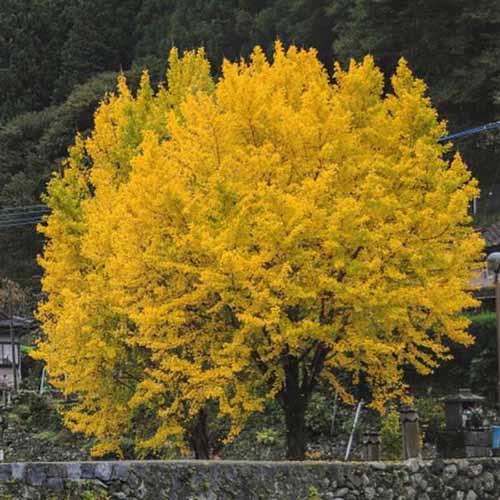
Continue to keep the soil moist as the seedlings grow and develop , and repot them as needed , gradually size up until they ’ve been repotted into five - gallon container , which should take about two to three years . At this point , they should be ready for fall or leap transplant !
From Cuttings
If you do n’t have admission to ginkgo fruit , or do n’t want to risk growing a female from seed , taking cuttings is the way to go to distribute clones of the parent plant .
In June , take six - inch duration of untested wood with a sterilise blade from the end of goodly branches .
Defoliate the bottom half of each carving . Dip the cold shoulder end into root hormone , like this IBA rooting pulverization from Bonide that’savailable via Arbico Organics .

Bonide Bontone II Rooting Powder
amaze each cutting in its own four - inch container filled with a 50:50 mix of peat moss and perlite .
wash the medium , and keep the cuttings in lineal igniter somewhere indoors . take root should come about in about seven to eight weeks .

After they take root , be sure to repot the film editing as they begin to outgrow their container , keeping the potting intermediate moist all the while .
find free to give the containers a fourth - bout each day so that they do n’t grow all lopsided .
Come springtime , the cuttings can be harden off as report above for seedlings .
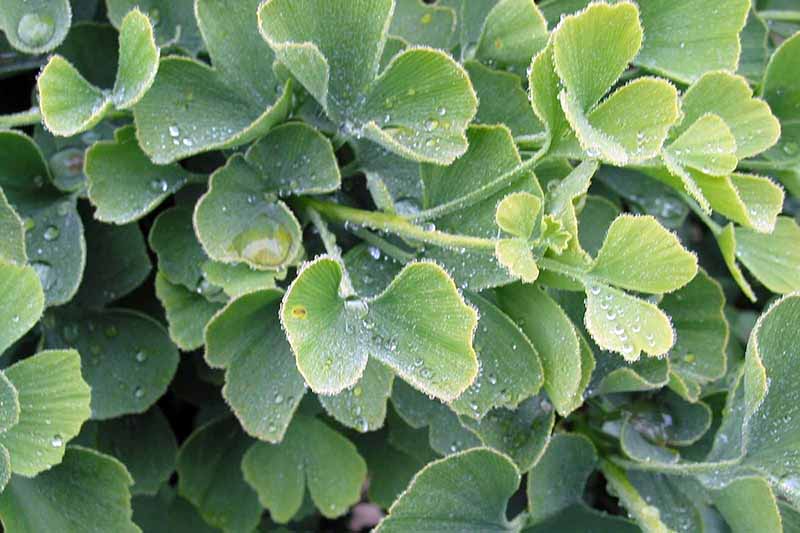
Continue to handle for and repot the cutting until they ’re growing in five - Imperial gallon containers . At this point , they ’re all coiffe for transplant in leap or fall !
line up more tips on propagating from cuttings here .
Via Transplanting
Prepare fertile , well - draining , and deep planting site , space about as far apart as you ’d ask the transplants to spread at maturity .
excavate yap to suit the organ transplant ’ radical system of rules , and just a bit wider .
Lower your transplant into the hole , backfill with dirt , and water it in . Keep the surrounding territory moist until transplant become established .
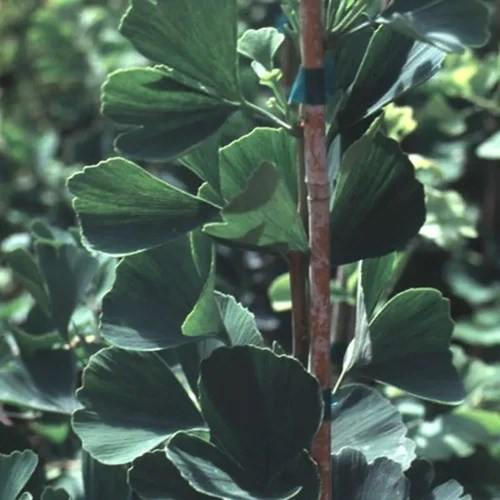
How to Grow Ginkgo Trees
G. bilobashould be planted in USDA Zones 3 to 9 , and provided with full sunlight exposure . Do n’t vex – it has the heat ohmic resistance to thrive in the upper goal of its hardiness range !
These tree can tolerate limit planting areas and air contamination , so do n’t worry if your planting situation is n’t in a wide overt space . These trees are often grown in urban stage setting .
As long as the filth is well - draining , a maidenhair tree is n’t too picky . Although it opt mysterious , fertile , and slightly acid soil , it can palm various territory textures , high-pitched grime acidity , and even some alkalinity .

A ginkgo loves temperate dirt wet , so provide pee whenever the top two to three inch of grease palpate ironical .
These Sir Herbert Beerbohm Tree can actually tolerate drouth once established , so do n’t sweat it if you do n’t always provide anoptimal amount of waterin the absence of rainfall .
Given this Sir Herbert Beerbohm Tree ’s disfavor of “ wet feet ” – i.e. oversaturated soils – it ’s really far better to irrigate too little than too much .
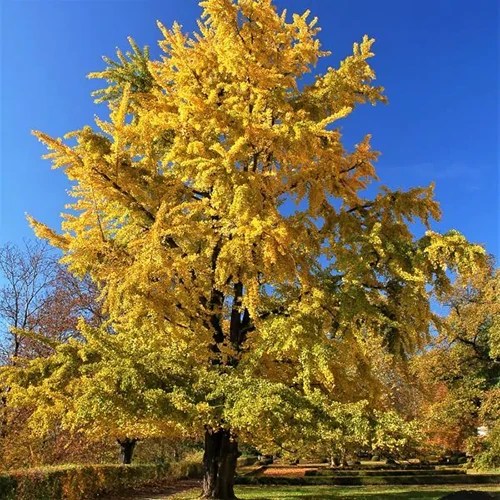
For springtime fertilisation , you’re able to either work a dyad inches ofcompostor well - molder manure into the origin zona , or go for a well - balanced , dull - button plant food instead .
For the latter , stress this 14 - 14 - 14 NPK fertiliser from Osmocote , which’ll feed your plants for four whole months ! It ’s sold in 1.5 - pound sterling containerson Amazon .
Growing Tips
Pruning and Maintenance
Although you may ( and should ! ) prune dead , pathologic , or damage branches whenever you happen to notice them , a gingko will probably need a spot of pruning at the commencement of spring .
During this formation session , you should remove any structures that take off from the tree ’s aesthetic , such as span or drooping arm .
Do n’t lop off more than a third of the tree ’s aboveground mass in one go !
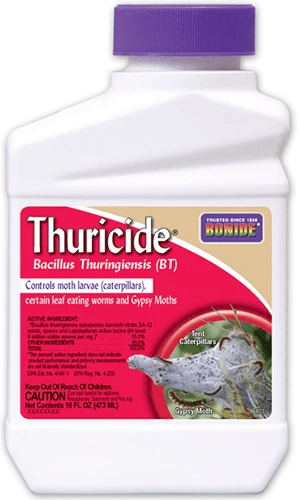
defend a few in of mulch around the trunk will help to protect the roots , insulate the soil , and preserve moisture . Keep a couple inches of space between the mulch and the trunk , and do n’t pile it up like a vent .
You also may or may not require torake up the autumn leaveswhen they fall .
get rid of them will by all odds be neater , while “ leafing ” them on the ground will earmark them to act as a natural source of mulch and organic subject . It ’s up to you !

If you ’re growing a female ginkgo … your nasal passageway have my condolence .
When the fruit start to miss in fall , you ’ll unquestionably want to transmit a daily cleanup if these are planted near sidewalks , driveways , or walkways .
Nothing ruin a pristine landscape quite like the ambient aroma of upchuck .

Ginkgo Tree Cultivars to Select
Do n’t get me wrong , a standardG. bilobais definitely amazing , and one of these can be purchase in # 3 and # 5 containersfrom Nature Hills Nursery .
Gingko Biloba
But for those who need to “ branch ” out a bit , there are some solid cultivars out there . Here ’s a handful of male change that I really like :
Autumn Gold
make mature dimensions of 50 foot tall by 30 feet wide , ‘ Autumn Gold ’ sports a beautifully proportionate , generally - spread out , and cone-shaped form .
Plus , this variety has parting that flaunt an absolutelygorgeousgolden yellow hue in fall .
They persist on the tree for weeks before fundamentally dropping all at once , bequeath a beautiful golden carpet of fallen foliation around the trunk .
For rooter of pretty autumn leaves with light cleanup position , you ca n’t go wrong with ‘ Autumn Gold . ’
‘ Autumn Gold ’
To purchase ‘ Autumn Gold ’ in starting sizes of four to six feet , visit FastGrowingTrees.com .
Fairmount
Whether in politics or landscaping , sometimes you just want a secure central leader . ‘ Fairmount ’ has just that , along with a minute , erect , and obtusely - crown form .
This cultivar was pick out from a Sir Herbert Beerbohm Tree in Philadelphia ’s Fairmount Park , hence the name .
With a mature top of 75 feet and facing pages of 25 feet , ‘ Fairmount ’ is a staring option to make shadowiness in a minute planting situation !
Jade Butterfly
require to go more stocky ? Try ‘ Jade Butterfly , ’ a dwarf cultivar that uprise to be about 12 to 15 feet tall and six to 10 feet spacious .
name for its deep notched leaves that resemble the wings of jade green butterflies , this variety has an erect , vase - shaped form and a ho-hum growth charge per unit .
‘ Jade Butterfly ’ is substantiation that good thing do issue forth in small-scale software package !
‘ Jade Butterfly ’
To buy ‘ Jade Butterfly ’ in a # 1 container , give the folksover at Nature Hills Nurserya digital visit .
Princeton Sentry
taste to take your landscape ’s awesomeness ? There ’s no better way to get your point across than with a pointed ginkgo .
With a mature summit of 40 to 60 feet and spread of 15 to 25 feet , ‘ Princeton Sentry ’ has a narrowly conical cast that ’s point at it ’s apex and a bit broader at the radical .
The most uniform and picturesque 1 I ’ve view are pleasantly geometric , and more ideal for fitting in tighter spaces than the standard species .
‘ Princeton Sentry ’
For a ‘ Princeton Sentry ’ in a assortment of starting sizes , delay out Nature Hills Nursery .
need More option ?
Be certain to check out our supplemental guide , “ 25 of the Best Ginkgo Biloba Cultivars for Your Landscape . ”
Managing Pests and Disease
G. bilobais relatively resistant to pest and disease , but you should persist aware of a brace likely problem .
Herbivores
Not much to worry about in the plant life - munching mammal department … at least today , anyway .
There are record of modern - day come dispersal by select critters such as wild cats , badgers , and Pallas ’s squirrels , but back in prehistory , ginkgos probably hadwaymore mammalian visitant than they do now .
It ’s even been theorized that dinosaurs could have eat from ginkgos . But a Jurassic Park - vogue dino zoo is still a farsighted way off . extolment to whomever has to eventually come up withthatIPM plan !
Insects
If you do a good line of work of preventing pests from infesting your plant , you ’ll also help prevent the diseases that they could vector , so it pay to stay on top of your pest management !
Most insects are n’t immense rooter of eating ginkgo leaf , but some leaf - munching caterpillars such as omnivorous loopers – akaSabulodes aegrotataandS. caberata – will have themselves a taste or two .
YoungSabulodeslarvae are pale yellow caterpillars , while older larva are greenish , with black and lily-livered stripes and a brownish - bronze fountainhead .
Both kinds can consume muddle in foliage , which can be inaesthetic and reduce photosynthesis .
Infested leaf should be thoroughly spray withBacillus thuringiensis , a beneficial bacterium , whilebeneficial insectssuch as parasitic wasps and lacewing larvae love to crunch on these pests .
For deal magnanimous and hard - to - spray trees , it ’s in all probability worth consult an arborist .
Bonide Thuricide
Bonide offers a 32 - ounce , ready - to - sprayer bottle ofBtvia Arbico Organics , while some good insects can be purchasedfrom Arbico Organics .
belong to theMeloidogynegenus , root - knot nematodes are microscopical roundworms that encroach upon plant origin and cause them to evolve elephantine feeding cells , which they course on from within .
The surrounding antecedent tissue swell up into knot - similar galls , which intervene with water and nutritious uptake .
Above the territory wrinkle , symptom include leaf wilting , scrubby growth , and foliar chlorosis .
These symptoms are rarely fateful in woody plant such as ginkgos , but they can definitely exit afflicted specimen look less than their best .
Long - lasting nematode management is tricky and difficult , so it ’s good to focus on bar .
forefend transplantation from infested part of your garden , and only utilize nematode worm - loose plants and filth .
Disease
The technique used to prevent nematode infestation also work for many diseases ! Sanitize tools , utilize disease - free stock , and do n’t grow your plant in already - infected soils .
Resulting in browned foliage crown and interveinal greensickness , leaf scorch in urban ginkgos has multiple likely reason .
It can be triggered by insect - vectoredXylella fastidiosabacteria or environmental stressor such as high hotness and drought .
research laboratory examination is unquestionably recommend to determine the cause , as the initial symptoms are similar no matter of the movement .
It ’s best to prevent and treat environmental leaf scorch with right irrigation , but there ’s no known therapeutic for bacterial folio singe .
If bacterial foliage singe direct to the tree ’s decay and death – whichispossible – it ’s upright to slay and toss of the infested specimen and interchange it with a tougher tree diagram .
Plants insubordinate to bacterial folio scorch include black tupelo , Japanese zelkova , and beech Tree .
Whether due to a lack of atomic number 8 or by pathogens such asArmillariafungi , root bunk is a gnarly condition for a plant to stand .
Rotted - out roots ca n’t take up urine or nutrients effectively , which work havoc above the dirt line : greensickness , leaf drop cloth , offset dieback , or even demise can result .
Too much irrigation is a major cause of root rot , so make certain to dial in your watering and provide sizable drain .
There ’s no known cure for rootage decomposition , so any impaired plants that are near death and/or have a bulk of their beginning rot will need to be lift and destroyed .
Best Uses for Ginkgo Trees
G. bilobaain’t a one - caper pony , folks : it ’s atree that provide tincture , does just fine in urban sites , and can be a prominent specimen , specially with age .
Its unique foliage is magnificently striking – especiallyin fall – and the tree can even be cultivated asbonsai !
Its uniqueness is also a bit of a doubly - edged brand , as it may look a bit out of place next to more traditionally suburban planting likered maplesandarborvitae .
But when paired with other prehistorical - looking plants such asferns , mosses , andsago palms , G. bilobaprovides a delicious way to remember how far life on Earth has hail .
Quick Reference Growing Guide
Go for Some Ginkgo!
Modern and geologically - young plants are emphatically awe-inspiring , but we should n’t block what came before . What better mode to preserve the botanic yesteryear than withG. biloba ?
Even beyond their history , Ginkgo biloba trees are quite coolheaded . And who knows ? If you imbed one now , your descendants could have a really epic plant life for millenia to come !
desire togrow other shade Tree in the landscape ? Here are some more guides to get you begin :
© enquire the Experts , LLC . ALL RIGHTS RESERVED.See our TOSfor more item . merchandise exposure via Arbico Organics , Bonide , FastGrowingTrees.com , Nature Hills Nursery , and Osmocote . Uncredited picture : Shutterstock .
About
Joe Butler